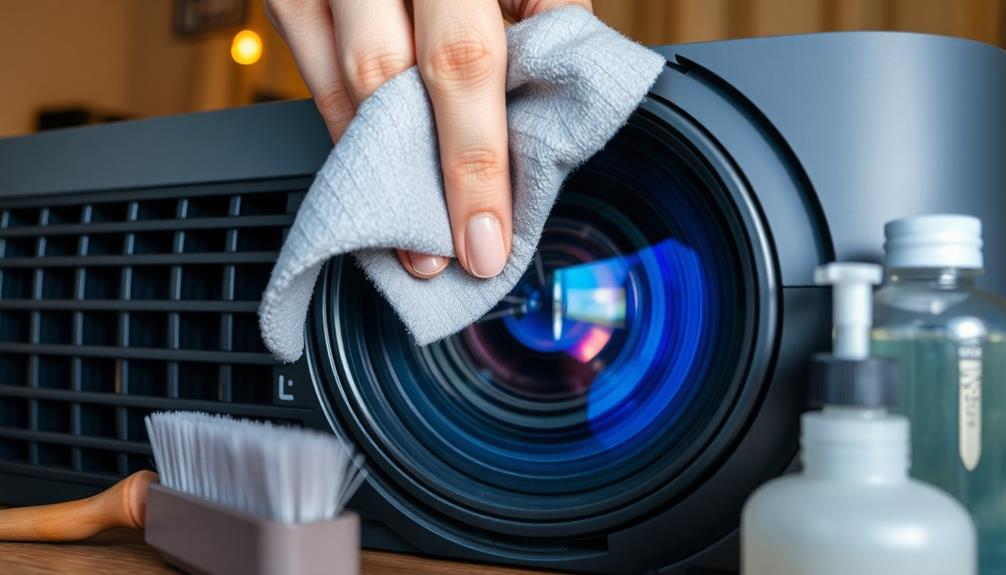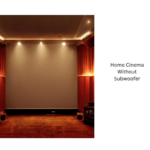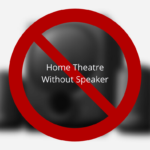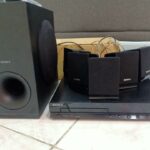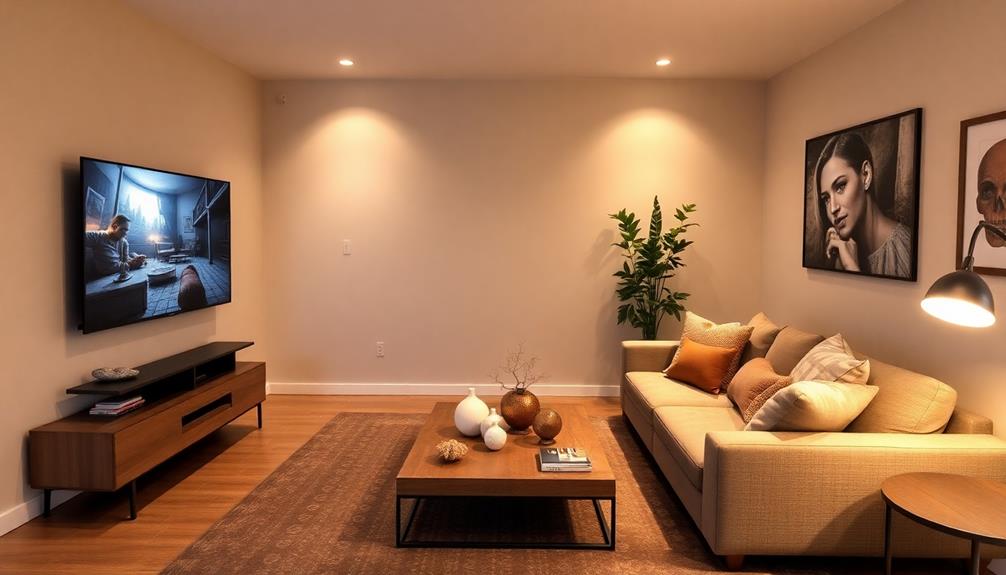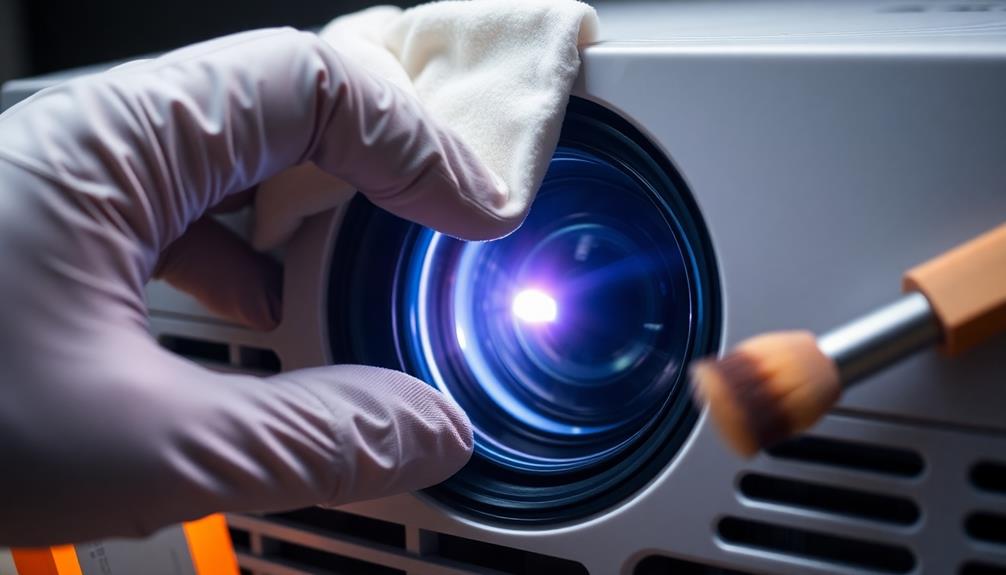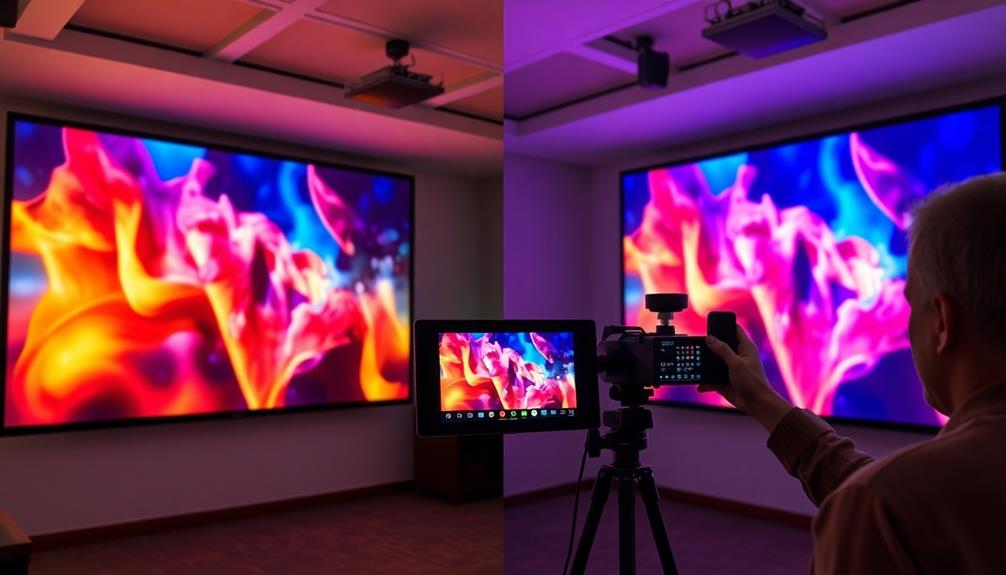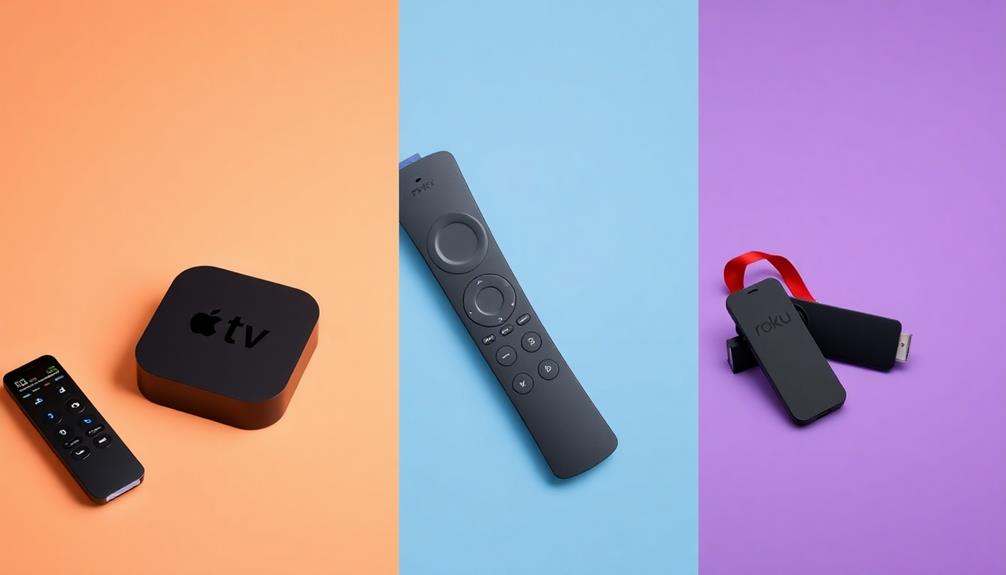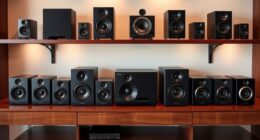You can build a budget-friendly 5.1 surround sound system by focusing on a few essential components. First, set a budget around $300 and check the used market for quality AV receivers and speakers. Prioritize a good AV receiver and larger tower speakers for better sound. Choose five speakers—two front, two surround, and one center—and invest in a quality 12-inch subwoofer. Make sure your receiver supports at least five channels and multiple HDMI inputs for future upgrades. Proper speaker placement is vital for a great experience. Stick around to discover more tips on maximizing your setup's performance.
Key Takeaways
- Set a budget limit of around $300 and prioritize essential components like a good AV receiver and tower speakers for better sound quality.
- Look for used audio equipment to save costs, focusing on reliable brands such as Denon, Yamaha, and Onkyo for AV receivers.
- Choose larger tower speakers for the front and ensure consistent brand or family for all speakers to maintain coherent audio quality.
- Select a subwoofer with at least a 12-inch driver and 150 watts to enhance low-end frequencies and consider used options for savings.
- Position speakers optimally, with rear speakers at ear level and front speakers angled correctly, to achieve the best surround sound experience.
Determine Your Budget
Setting a budget is essential when building a budget-friendly surround sound system. Start by setting a clear limit, ideally around $300, to create a 5.1 home theater setup. This budget should cover both new and used options, maximizing your value.
Don't overlook the used market; you can often find quality AV receivers and surround speakers at lower prices than their new counterparts. For an enhanced audio experience, consider how color accuracy impacts overall image quality when integrating your system with a projector.
Prioritize essential components in your budget home theater. Focus on a good AV receiver and tower speakers, as they provide better bass response and sound quality without breaking the bank.
Allocating funds for gradual upgrades is also wise; invest in quality components that will support future enhancements, ensuring you won't need to replace everything later.
Be aware of potential price increases in audio equipment due to market trends. Adjust your budget accordingly to secure the best deals, so you can snag that perfect AV receiver or set of surround speakers.
Essential Components Overview
When building a budget-friendly surround sound system, it's essential to know the fundamental components that will make up your setup. A typical 5.1 surround sound system includes a receiver, five speakers, and a subwoofer.
The receiver is the heart of your system, allowing you to connect all your audio sources and manage sound settings. Look for budget-friendly options like the Denon AVR-S540BT, which offers fundamental features without breaking the bank.
For your speaker system, you'll need two front speakers, two surround speakers, and a center speaker. Tower speakers, such as the Monoprice MP-T65RT models, are recommended due to their superior bass response and sound quality.
Avoid smaller bookshelf speakers if you want a more immersive experience.
A good subwoofer is essential for enhancing low-end frequencies. Aim for one that's at least 12 inches in size and around 150 watts to guarantee decent performance.
Selecting an AV Receiver
With your speaker system in mind, choosing the right AV receiver is a key step in building your budget-friendly surround sound setup.
Start by ensuring the receiver has at least five channels and supports high-definition audio formats like Dolby TrueHD and DTS HD. This support is essential for a superior surround sound experience.
Look for models with multiple HDMI inputs and HDMI 2.1 compatibility, which will future-proof your system for advanced video resolutions.
It's also worth considering a used AV receiver to save money, but make sure it meets the current audio format requirements and has enough power output for your center speaker.
Brands like Denon, Yamaha, and Onkyo offer reliable, budget-friendly options. For instance, the Denon AVR-S540BT is available for around $349 and provides solid performance.
Additionally, check for built-in streaming service support and Audio Return Channel (ARC) capabilities to enhance connectivity with your smart TV.
Choosing the Right Speakers
Selecting the right speakers is essential for achieving an immersive surround sound experience. Start by prioritizing larger tower speakers, like the Monoprice MP-T65RT, which deliver better bass response and overall sound quality.
These speakers will enhance your listening experience, making action scenes more impactful and music more enjoyable.
If you're looking for a hassle-free option, consider a boxed speaker system such as the Klipsch Reference Home Theater package. Priced around $360, it simplifies setup and includes all the essential components you need for a 5.1 system.
Consistency is key in surround sound, so aim to use speakers from the same brand or family. For example, the ELAC Debut 2.0 series provides coherent audio quality across your setup.
Don't forget about the center channel speaker; it's vital for dialogue clarity in movies and shows.
If you're on a tight budget now, plan to invest in a quality center channel speaker as a future upgrade. By making these thoughtful choices, you'll create a surround sound system that delivers a rich and engaging audio experience.
Subwoofer Selection Tips
A good subwoofer is essential for enhancing your surround sound experience, and a 12-inch model with around 150 watts of power is a solid choice to achieve impactful bass.
When selecting your subwoofer, consider opting for a ported design. These subwoofers allow for greater air movement, resulting in deeper bass compared to sealed models.
Look for subwoofers with adjustable crossover settings, as this feature lets you customize the frequency range to blend seamlessly with your main speakers. It's vital for achieving that immersive audio experience you're after.
Pay attention to the subwoofer's frequency response specifications; a range that extends down to 20 Hz will enable you to enjoy movies and music with rich, deep bass.
If you're on a tight budget, don't overlook the used market. You can often find well-reviewed, high-quality subwoofers at considerably lower prices than new models, making it easier to stick to your budget while still enhancing your sound system.
With these selection tips in mind, you'll be well on your way to enjoying an upgraded audio experience without breaking the bank.
Surround Speaker Placement
After choosing the right subwoofer, it's time to focus on how you place your surround speakers for the best audio experience. For ideal sound, position your rear speakers at ear level, about 2 to 4 feet above your main listening area. Aim them at an angle of 110 to 120 degrees from your seating position. This setup creates a more immersive experience in your surround system.
Next, place your front left and right speakers at an angle of 22 to 30 degrees from the center channel speaker. Make sure they're equidistant from your main seating area for balanced audio. The center channel speaker should be directly aligned with your TV screen and also positioned at ear level. This helps anchor dialogue and on-screen sounds effectively.
While you're setting up, consider where to place the subwoofer. Corners or walls work best to enhance bass response.
HDMI Connectivity Explained
In today's home theater setups, understanding HDMI connectivity is crucial for achieving the finest audio and video experience. HDMI, or High-Definition Multimedia Interface, allows you to transfer high-quality audio and video signals over a single cable. This simplifies your connections and reduces clutter in your setup.
When you're setting up your system, check for HDMI ports on your TV and AV receiver. Most modern devices come with multiple HDMI inputs and outputs, making it easy to connect various media sources.
Look for receivers that support HDMI ARC (Audio Return Channel), as this feature lets audio flow back to the receiver from your TV, eliminating the need for an extra audio cable.
To future-proof your system, verify your AV receiver supports HDMI 2.1. This compatibility is crucial for advanced video resolutions and refresh rates, especially if you're into gaming or high-definition content.
Finally, when selecting HDMI cables, opt for those rated for the required bandwidth, like Ultra High Speed HDMI cables, to guarantee peak performance for 4K and 8K video formats.
With these tips, you'll enjoy a seamless audio and video experience.
Future-Proofing Your System
As you set up your surround sound system, thinking ahead can save you time and money down the road. When selecting an AV receiver, prioritize models that support HDMI 2.1 and advanced audio formats like Dolby Atmos and DTS:X. This guarantees compatibility with future audio and video technologies, making your system more resilient to change.
Investing in a quality receiver with multiple HDMI inputs allows for seamless integration of new devices, making upgrades easier without the need to replace everything.
Consider starting with a basic 5.1 system of speakers that can be easily upgraded later. Look for options that allow you to add higher-quality components, such as tower speakers or subwoofers, over time. Modular surround sound systems are also a great choice, letting you enhance your setup gradually without significant upfront costs.
Don't forget to assess your room acoustics and speaker placement as you plan for future upgrades. A well-thought-out setup now will accommodate better sound quality as your system grows.
Final Setup Considerations
Creating the perfect surround sound setup involves more than just buying the right equipment; it requires careful attention to detail in your final adjustments. Start by verifying your audio/video receiver (AVR) has at least five channels and supports modern audio formats like Dolby TrueHD and DTS HD. This is essential for an ideal experience.
Next, invest in a quality subwoofer, ideally around 12 inches and 150 watts. It'll enhance your bass response and overall audio performance. Also, speaker positioning plays a significant role; place your speakers at ear level and verify they're equidistant from your listening position for better sound quality.
To maximize your budget, consider looking for used AV receivers and speakers. The used market often offers higher quality for lower prices. Finally, plan for future upgrades by choosing a flexible system design that allows for the easy addition of components.
Here's a quick reference table:
| Consideration | Recommendation |
|---|---|
| AVR | At least 5 channels |
| Subwoofer | 12 inches, 150 watts |
| Speaker Positioning | Ear level, equidistant |
| Used Equipment | Check local markets |
| Future Upgrades | Flexible system design |
Frequently Asked Questions
How to Make a 5.1 Home Theatre at Home?
To create a 5.1 home theater, start with a suitable AV receiver, add quality speakers, including a subwoofer for bass, and guarantee proper placement. Connect everything using HDMI for the best audio experience.
Can You Build Your Own Surround Sound System?
Absolutely, you can craft your own surround sound system! Think of it as building a sonic masterpiece, where you choose each note. Just pick your gear wisely and position your speakers for an immersive experience.
What Is Needed for 5.1 Surround Sound?
For a 5.1 surround sound setup, you'll need five speakers, a subwoofer, and an AV receiver. Proper placement enhances audio quality, so consider speaker size and positioning for the best immersive experience.
What Is the Best Layout for 5.1 Surround Sound?
For the best 5.1 surround sound layout, position the center speaker above or below your TV, angle front speakers towards you, and place surround speakers slightly behind your seating area for immersive audio.
Conclusion
By following these steps, you can create a budget-friendly 5.1 surround sound system that'll make your living room feel like a blockbuster cinema. With careful selection of components and proper setup, you'll be immersed in stunning audio that rivals even the grandest theaters. Don't forget to future-proof your system so it stands the test of time. So go ahead, plunge into this project and elevate your movie nights to an epic experience you won't forget!
Hello, I’m Art, and I’m excited to be a part of the 1Home Theatre Projector team. As a writer, I’m here to contribute my knowledge and insights to help you achieve the ultimate home cinema experience. I understand that making decisions in the world of home entertainment can be complex, and I’m here to simplify the process for you.

